The mythology of the ancient Greeks is positively packed with stories involving weird and wonderful creatures. Represented on pottery, in sculpture, and in literary tradition, they typically create havoc with the best laid plans of the Greek heroes but they could also prove helpful in certain situations. Hercules, Odysseus, Theseus, Perseus, Bellerophon, and Jason all had to fight monsters which were very often a mix of other more familiar creatures or were just downright bizarre. The heroes usually won, of course, and their battles with these monsters made them seem even more heroic. The imaginative blend of animals also served to represent the disorder of both the animal and foreign kingdoms in the Greek view of the world and perhaps also represented the unfamiliar wildlife of distant lands. The triumph of Greek heroes over these terrible creatures was an entertaining metaphor for the perceived superiority of the Greek way of life, the victory of light over darkness, reason and order over chaos.
You can read more extraordinary tales from Greek mythology in our article here.
Centaur: Half man-half horse
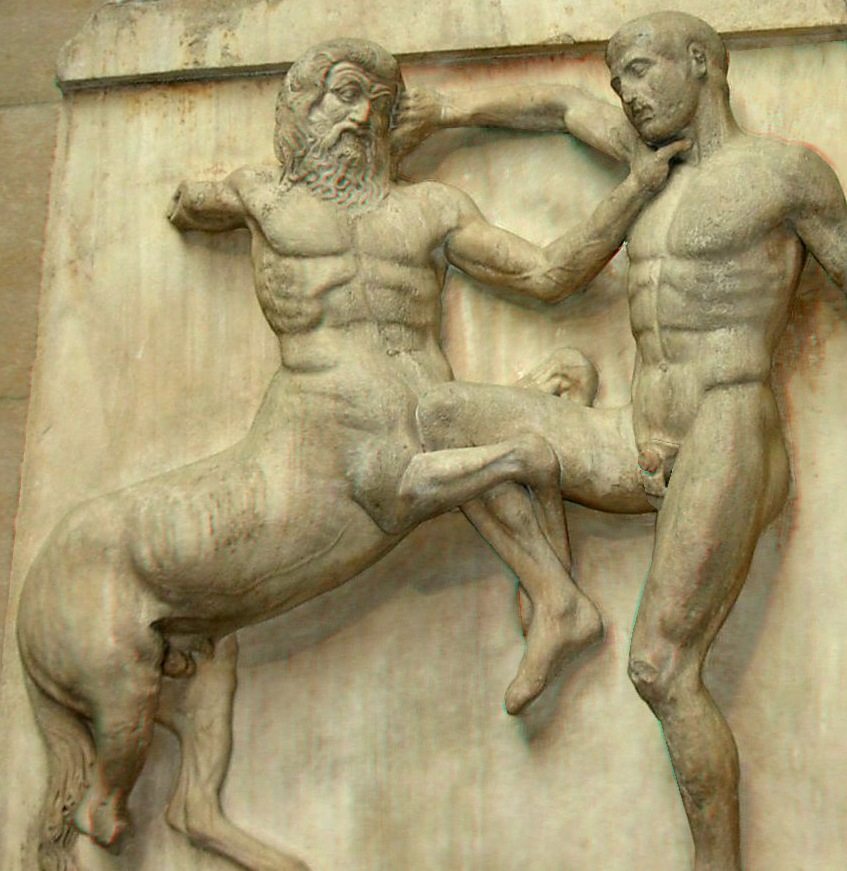
Centaurs were traditionally used to represent unruliness and drunkeness. Metope depicting a centaur attacking a Lapith. From the Parthenon, 5th century BCE. British Museum, London. Photographer: Mark Cartwright
Gorgon: Half woman-half snake
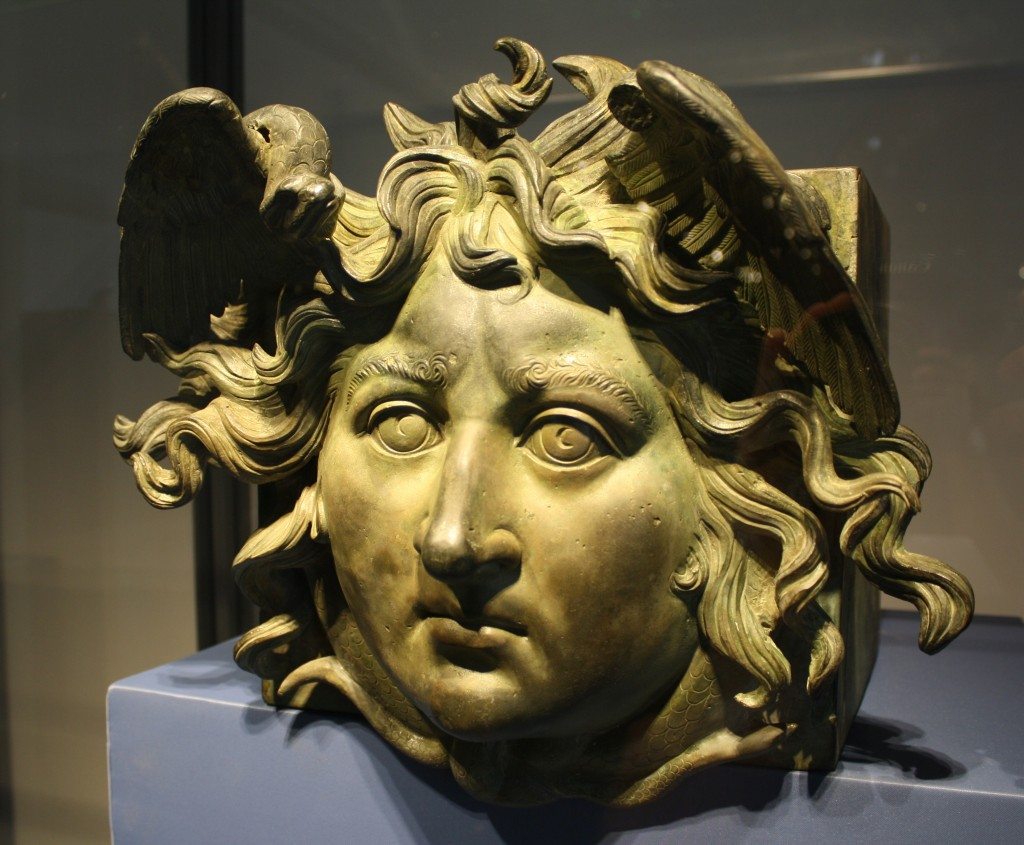
The most famous Gorgon was Medusa whose stare could turn onlookers into stone but who was finally killed by Perseus. A decorative element of a ship built for Caligula. Palazzo Massimo, Rome. Photographer: Mark Cartwright
Minotaur: Half man-half bull
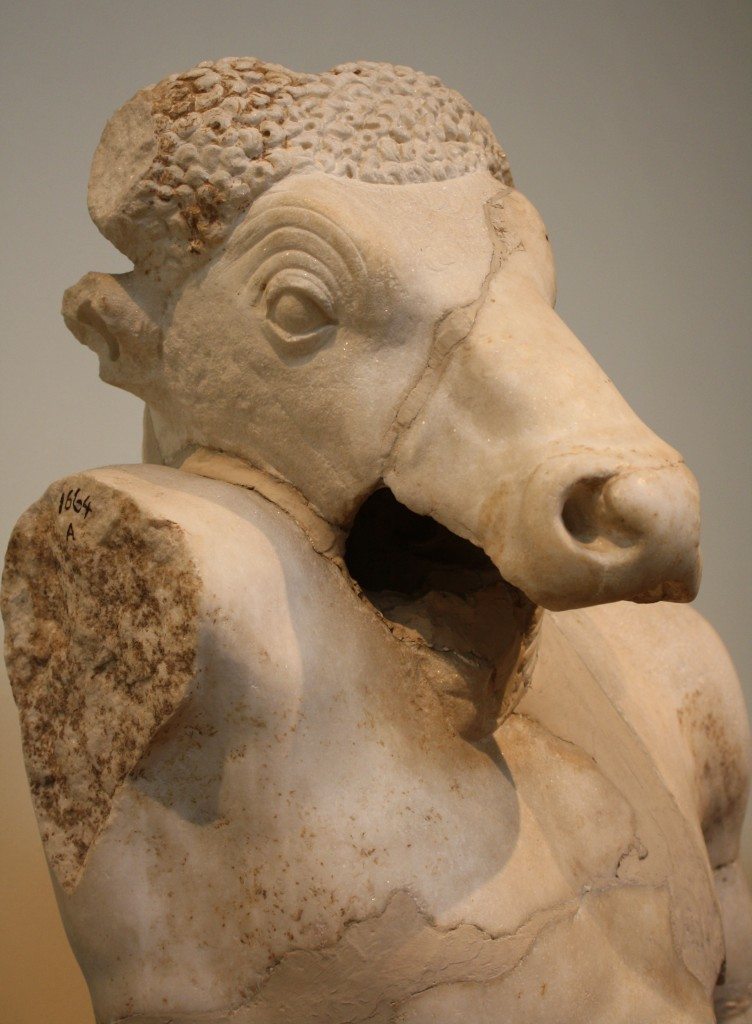
The Minotaur was the guardian of the labyrinth at Knossos but was finally killed by Theseus. Marble Minotaur, National Archaeological Museum, Athens. Photographer: Mark Cartwright
Griffin: Half lion-half eagle
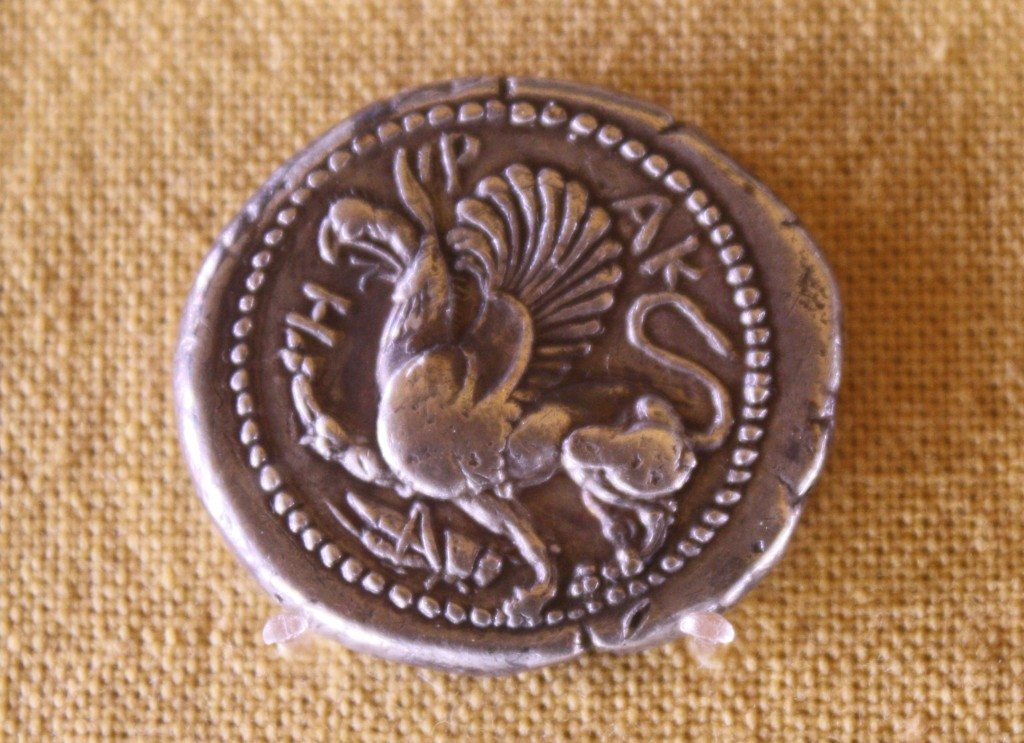
The grffin had the body, tail and hind legs of a lion with the front legs and head of an eagle. Traditinally considered a guardian of treasure and the king of the animal kingdom. A coin from Abdera depicting a griffin. The Numismatics Museum, Athens. Photographer: Mark Cartwright
Cyclops: A One-eyed Giant
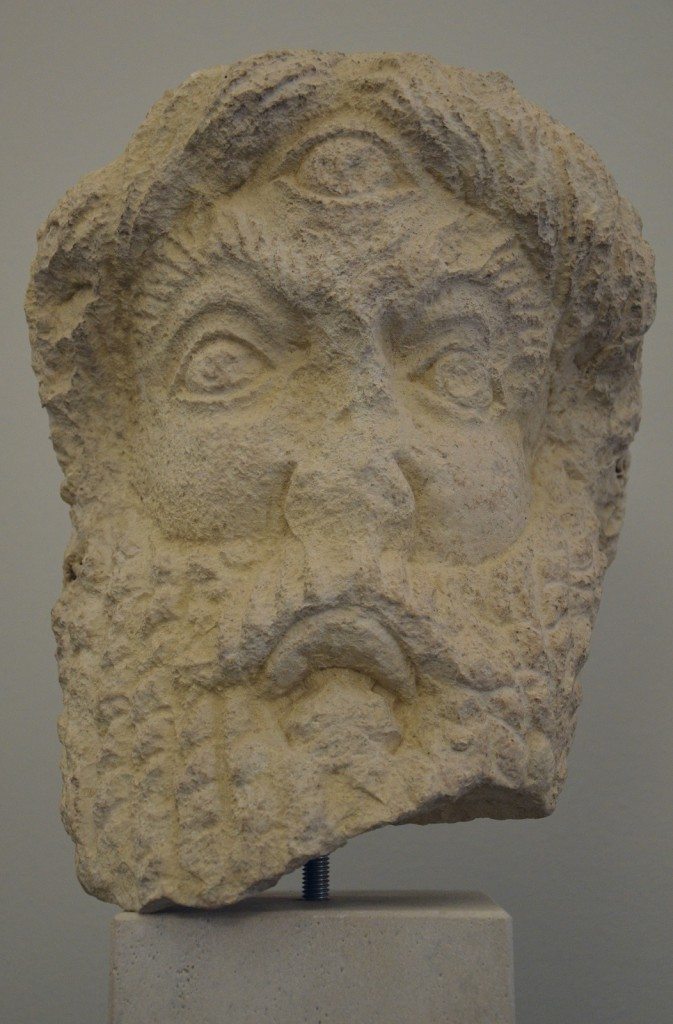
The cyclops Polyphemus famously detained Odysseus and his men until they blinded him and escaped. Polyphemus, 4th century CE. Split Archaeological Museum. Photographer: Carole Raddato.
Hydra: Multi-headed snake

A depiction of Hercules slaying the Lernaian Hydra, one of his twelve labours. The hero would subsequently use the poisonous blood of the creature for his deadly arrows. 6th century BCE Hydria. Palazzo Massimo, Rome. Photographer: Carole Raddato
Chimera: Part lion, snake & goat
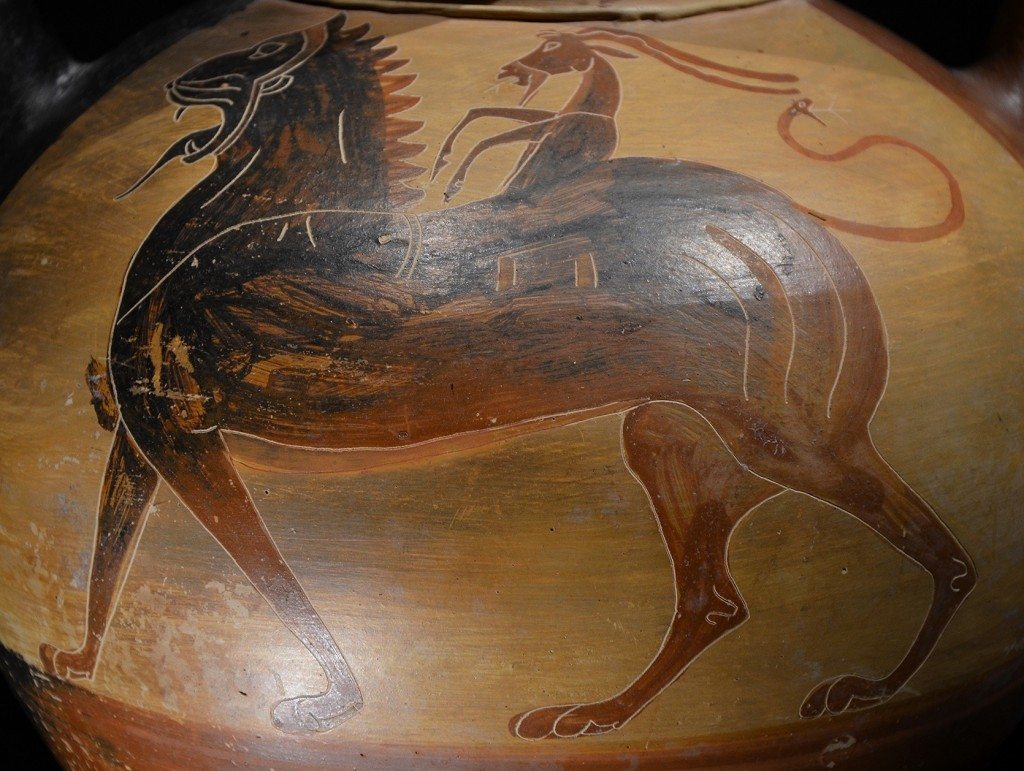
The fire-breathing Chimera had a lion’s body, a snake’s tail, and a goat’s head rising from its back. It was finally killed by the hero Bellerophon. Detail from a 6th century BCE amphora. Palazzo Massimo Rome. Photographer: Carole Raddato
Pegasus: The winged-horse
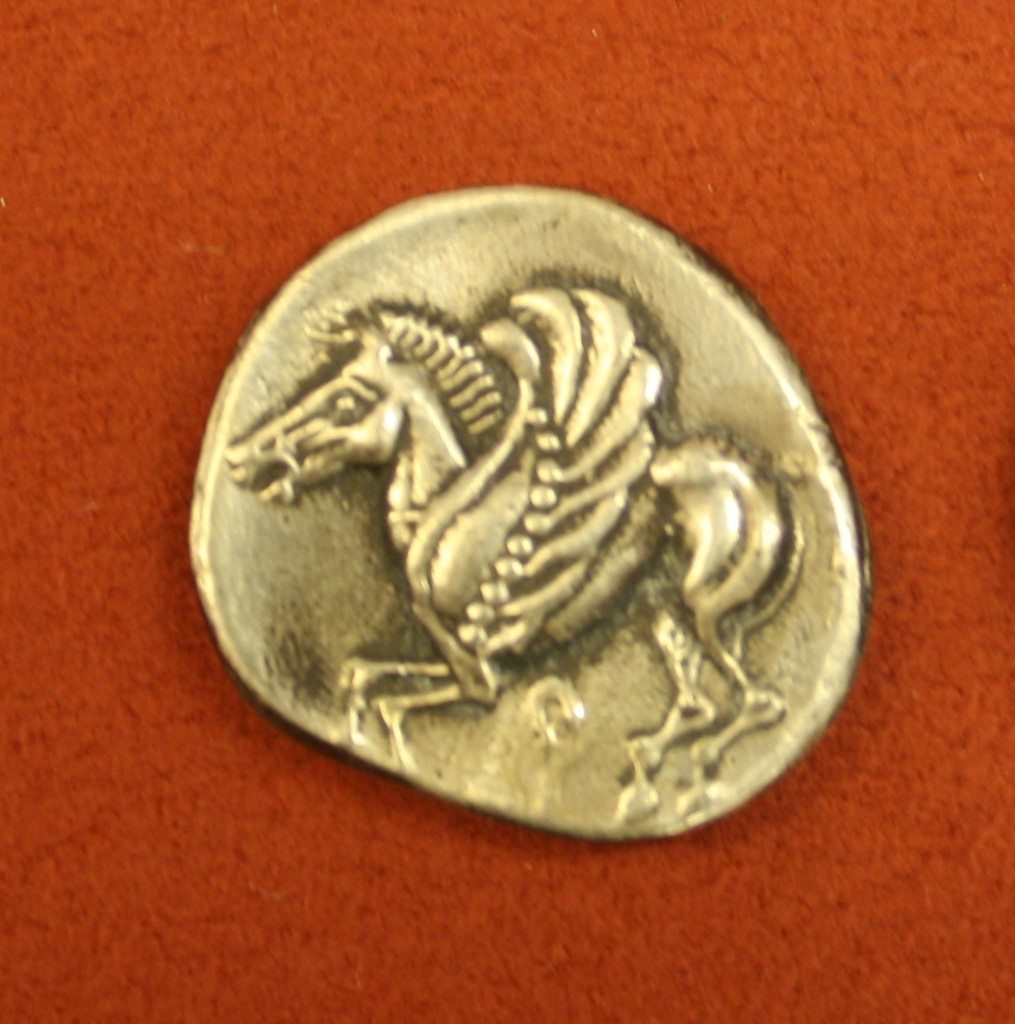
Pegasus the winged-horse was born from the severed head of Medusa and helped the hero Bellorophon. 6th century BCE coin from Corinth. Alpha Bank Collections, Athens. Photographer: Mark Cartwright
Sphinx: A winged lion with a woman’s head
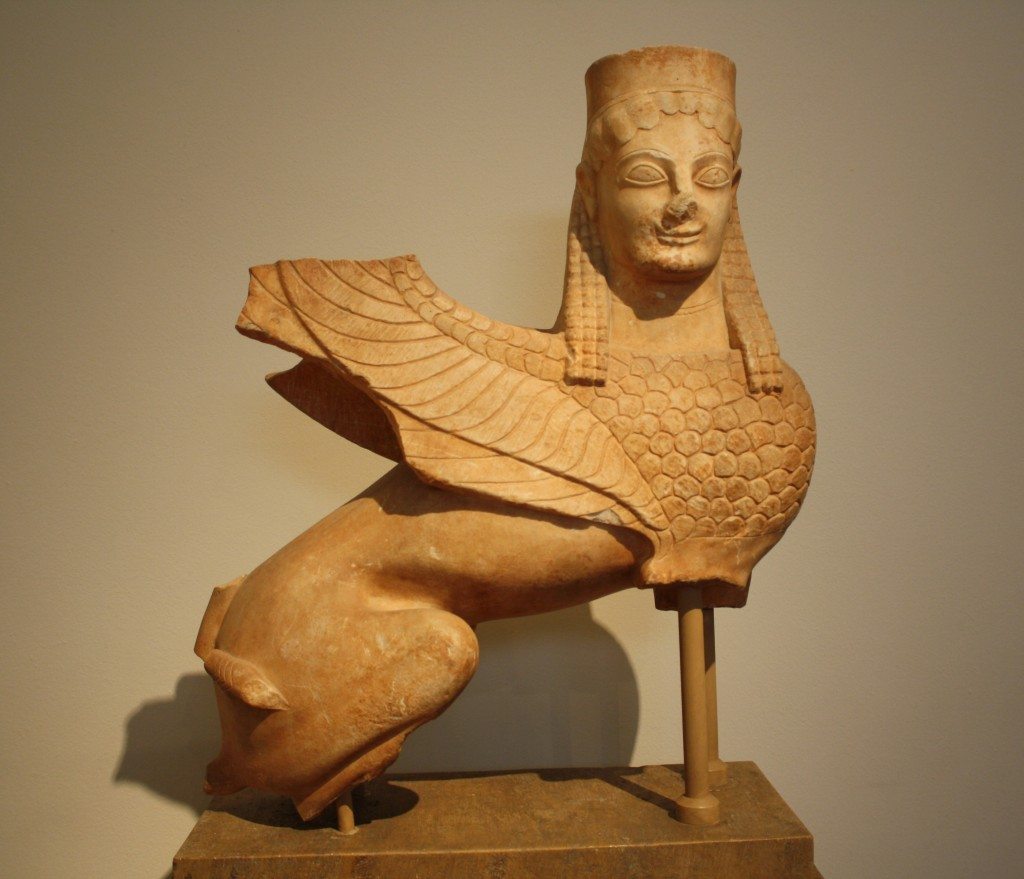
Sphinxes were considered troublesome creatures by the Greeks, the most famous set a riddle for Oedipus to solve. Funeral monument, 6th century BCE. National Archaeological Museum, Athens. Photographer: Mark Cartwright
Siren: Half woman-half bird

Sirens were famous for luring sailors to disaster using their beautiful music. Marble funerary monument, 370 BCE. National Archaeological Museum, Athens. Photographer: Mark Cartwright

